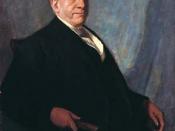The case discusses the five-year long organizational restructuring program undertaken by the leading consumer goods company Unilever. It examines in detail the important elements of the restructuring program named the "Path to growth" strategy. The case focuses on the corporate strategy of Unilever and changes brought about with respect to organizational structure, brand restructurings, the acquisitions, operational processes, IT and supply chain management practices. Finally, it discusses the results of the restructuring program and examines the company's future prospects and reasons for the giant to embark on 2005-2010 strategy.
Problems Appear:
A couple of years ago it was unimaginable that Unilever would get into any trouble. Under the dual chairmanships of the Fitzgerald and Antony Burgmans, Unilever had completed what many saw as the final stage in a restructuring that had turned the group from a potpourri of brands into a fully functioning international food and consumer goods company.
Unilever came up with the "path to growth" strategy, which set bold targets for earning per share of 5% to 6% per annum, spread over five years. This strategy was loved by financial institutions, but is now being blamed for the bind that Unilever is in. At its core was slimming down Unilever's portfolio from about 1,500 brands to just 400. Again, this strategy was fêted by analysts and investors, but caused unforeseen and unpredictable problems. Unilever went on a massive shopping spree in the late 1990's and spent about ã17bn ( 24.6bn) and took its debt levels to nearly $20bn ( 29bn). Again the deal stored up problems for the future.
The first signs that the wheels were coming off the Unilever cart emerged about three years ago, when the American doctor, Robert Atkins invented a low carbohydrate diet that led to millions of people gorging themselves on steak...


